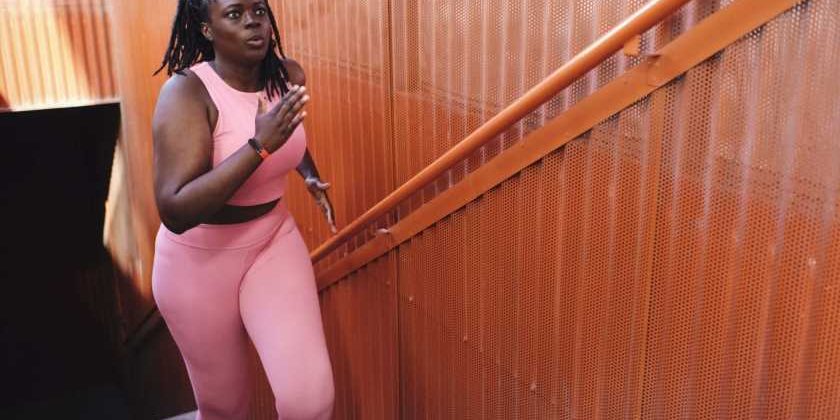Getting better at running is about so much more than jogging every day. Here’s how building stronger muscles in strength training can help your pace, power and keep you injury free.
Practice makes perfect, or so the saying goes. While that might be true for nailing a recipe or learning a new language, when it comes to running we need to do more than just hit the road every day.
That’s because running requires so much more than just learning how to put one foot in front of the other, from developing better cardiovascular fitness to being able to breathe correctly. But it also requires strength, as without building muscle we can’t expect to be able to push further forwards.
Amongst other things, regular strength training—especially for your legs—can help to correct muscle imbalances and weaknesses that are common in modern life.
You may also like
Running tips: 4 ways strength training makes you a better, faster runner
“Whether you’re someone like me who runs over short distances or somebody that runs long distances, you need the control and strength that comes from weight training,” explains Ashleigh Nelson, Team GB sprinter and founder of The Athlete Method. “If you’re asking your body to continually support you then you need to build it to do that.”
But it’s about more than just having the power to propel you forward, too. Weight training can also prevent injury by strengthening the bones and joints needed to support running. When we run, we put around four times our body weight through the muscles and joints in our lower body – that’s no mean feat. “As soon as we add a bounce or jump into our steps, we put pressure through the body. You need strong feet, ankles, knees and hips to stabilise all of that weight,” says Ashleigh.

An injury is a sure fire way to set yourself back on your running journey, so it’s better to be safe than sorry. But if a faster or safer run is your goal, we need to consider how we strength train for optimum results. “For sprinters, we need to focus on power, so someone like me racks up a heavy barbell and squats for five powerful reps. For someone who is a middle or long-distance runner, they should focus on muscular and joint endurance training rather than pure strength, so training at around 12 reps,” Ashleigh says.
As for what to train, “your glutes are your engine, so you need to strengthen them first and foremost” says Ashleigh. “Our hip flexors also do a lot of lifting, and strengthening the vastus medialis, on the inside of you knee, is really important in order to keep the knees safe.”
Strengthening your calves, feet and core are also important. While that sounds like a lot of muscles to target, there are some key compound moves that will work through a lot muscles to build these areas, as well as small intricate exercises that help you become efficient.
The best strength-building moves for runners
Squats

Squats work pretty much the entire lower body. While the focus may be on your quads and glutes that are needed to power you through your runs, it will also work through the hips, calves and the joints in the ankles and knees.
You may also like
Squats: what muscles do squats work and why they're the best lower body exercise
Leg press

Leg presses targets all the large muscles in your lower body. If you want to engage the glutes more during this exercise, try adding a short loop resistance band just above your knees.
Leg extension
A seated leg extension is the best way to target the all-important vastus medialis. Remember to work through this move slowly to really work on control and stability.
Calf raises

You can do these as a bodyweight exercise, holding dumbbells or using the seated calf raise machine in the gym. Again, it’s about control and stability through the muscles, so go slow to increase time under tension.
Feet sliders
“Everyone forgets about the feet, but we need them to take the weight of our bodies during the run,” reminds Ashleigh. Place a towel under one foot and pull it forwards and backwards by gripping through the toes.
You may also like
Strength training: 3 of the best calf exercises you can do at the gym, or from home
Incline row
While strengthening your lower body is crucial, working on your upper body, particularly the upper thoracic spine, is a good way to perfect your posture. An incline row will work the rear delts and back to help your shoulders stay open, rather than rounding forwards when you run.
How to balance strength training and running
There’s no prescription for how often you should run versus how often you should work on your strength. That has to come down to you, your goals and your preferences. For example, if you tend to get delayed onset muscle soreness (DOMS) after leg day, it’s probably best not to plan a run for the day after.
“You also need to consider which session is more important to you. If you want to do a 5K time trial and really nail your time, you probably shouldn’t do a huge gym session the day before. If you want to get a squat PB, you might want to rest the day before so as to not have tight hips and ankles for your session,” says Ashleigh. “Think about your priorities and do what feels right for you.”
Follow @StrongWomenUK on Instagram for the latest workouts, delicious recipes and motivation from your favourite fitness experts.
Images: Getty / Nick Rix (Rix Media)
Source: Read Full Article
